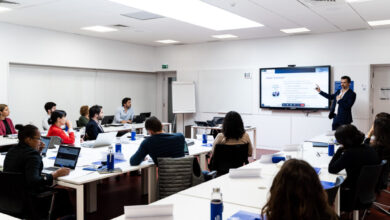The Path to Success Is Filled With Mistakes. Do These Four Things to Tap Into Their Growth Potential.

Opinions expressed by Entrepreneur contributors are their own.
For many people, mistakes carry a negative connotation. They are perceived as obstacles rather than opportunities on our path toward success. Mistakes are often viewed as costly, inconvenient and unacceptable — something there is no room for making.
Yet a valuable lesson is waiting to be learned with each mistake — especially new ones. This is a truth I recently discovered in a conversation with a Rabbi after I came late to pick up my kids from Hebrew School one day. Despite my tardiness, the Rabbi called me “Tzadik.” Tzadik, which is from the same root as the words “Tzedek” and “tzedakah,” literally means “one who is righteous and just” when translated from Hebrew. I was shocked when the Rabbi told me this because being righteous and just seemed incongruous with my actions. I later learned that the word has another meaning in Yiddish: a Tzadik is one who makes new mistakes.
This revelation underscored the inherent, transformative potential of embracing mistakes as catalysts for growth. But to tap into the potential for growth and success in mistakes, especially new ones, we must do some essential things.
Related: How Can Making Mistakes Help Us Sustain as Entrepreneurs?
1. Avoid mistake hoarding
Work culture often stigmatizes mistakes as failures, fostering a culture of concealment and fear. People tend to hide their mistakes from their managers and teams because they fear they will haunt them during the following performance review. This phenomenon, which I call “mistake hoarding,” inhibits individual and organizational progress by suppressing transparency and hindering innovation.
Instead, we must understand the role that mistakes play. This role goes beyond being an indication or measure of failure, misunderstanding, negligence or incompetence or serving as an opportunity to criticize or correct others negatively. The role of mistakes is to teach us; to provide opportunities to problem-solve and learn new skills and knowledge we may not already have; and to redirect and point us in a different, informed, potentially more successful direction that we wouldn’t have discovered without that failure.
2. The two-by-two model
At my company, Cloud for Good, we embrace a culture of learning. We recognize that mistakes are not instances of failure, but rather, they’re growth opportunities. Every quarter, our leadership team meets to review two processes that went well and two that didn’t. This is a time for us where, instead of taking the direct and perhaps easier route of pointing fingers or assigning blame for mistakes that were made, we intentionally focus on the learning aspect of these mistakes so that we can develop and implement operational decisions on how to avoid the same mistakes or repeat the success on our next projects.
Mistakes must be acknowledged and addressed to inform us how to make the appropriate adjustments and progress toward improvement. While it’s true that occasions of success and accomplishments are learning opportunities, so are mistakes — no matter how challenging they might be.
3. Make new mistakes
Cultivating a growth mindset is central to approaching and tapping into the potential for growth in mistakes. This perspective reframes setbacks as opportunities for learning and development. To make new mistakes and not repeat old mistakes, a person must pull themselves up, acknowledge the mistake, reflect, learn and try again. This is a very powerful concept.
As human beings, it is not always easy to admit and accept that we made a mistake, especially serious ones. However, by creating a space and culture where we can instead acknowledge our humanity and reframe our mistakes as part of our growth and the journey toward success, we are no longer limited and held back by our mistakes or a fear of failure. This also helps foster a space where, by focusing more intentionally on the learning lessons gained from mistakes and less on criticizing them, people can grow in resilience and build new skills to set them on a better path toward success and innovation.
Related: 6 Things You Gain By Embracing Failure and Learning From Mistakes
4. Embrace failure as part of success
Success is far more powerful and meaningful when we welcome space for failure. By inviting failure into the conversations, we’re challenging the norm of celebrating only the positive side of success. This “fear of failure” can often lead to poor collaboration and high turnover rates — something that can stifle the success of any organization.
That’s why I believe that failure is not the antithesis of success in the entrepreneurial journey, but instead an essential component. As Winston Churchill said, “Success is the ability to go from one failure to another with no loss of enthusiasm.” I strongly believe that one of the reasons my company was able to grow from a one-bedroom apartment to 250+ employees is because of our ability to reframe and welcome mistakes and failure into our work without automatically dismissing or condemning them, beginning by telling people not to be mistake hoarders, extract the lessons and valuable insights from our mistakes and continue moving forward with enthusiasm. And when new mistakes are made, we repeat that process to get closer to achieving our goals.
Success is not just driven by our expertise and knowledge, but also by what we’ve learned along the way — including what we learned from our failures. I would not have learned a fresh and compelling perspective on the innovative potential of making new mistakes if I had not been late to pick up my kids from Hebrew School. It is a mistake that I learned I don’t want to make again, but it also turned into a meaningful opportunity for me to learn and understand why welcoming mistakes and failure into our work and lives and learning from them is essential to accessing powerful pathways of growth, innovation and success.



